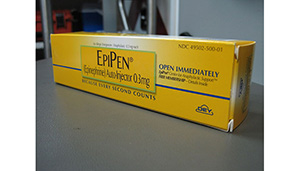 Prescriptions of emergency allergy auto-injectors have increased over the last decade, according to research published in the British Journal of General Practice, but there is little guidance for general practitioners on the optimal use of these devices.
Prescriptions of emergency allergy auto-injectors have increased over the last decade, according to research published in the British Journal of General Practice, but there is little guidance for general practitioners on the optimal use of these devices.
The most recent guidelines suggest that each child at risk of anaphylaxis should be given no more than 2 devices each year. But researchers at the University of Birmingham found that on average, kids from their study sample were each prescribed 4 devices per year.
The team looked at a database that included patient records from more than 500 general practices between 2000 and 2012. They identified 24,000 kids who were at risk of anaphylaxis and prescribed auto-injectors.
Over the 12-year period, the number of kids identified by general practitioners as being at risk of anaphylaxis increased 3.5 times and the total number of devices prescribed jumped 5-fold, the team reported.
The team hopes that its findings will encourage conversation about how to best manage kids with life-threatening allergies and reduce unnecessary prescriptions without affecting child safety.
“Of course, adrenaline autoinjectors are life-saving for those at a high risk of anaphylaxis- but current prescribing trends would appear to be wasteful,” co-author Lavanya Diwaker said in prepared remarks. “It may be that GPs are taking a cautious approach, or that parents are requesting extra devices to cover all of the areas that their child might go, and both are completely understandable. In the absence of clear guidelines, that’s a natural tendency. However, there is no evidence that prescribing multiple devices improves safety. What is more important is to ensure that these children carry their device with them at all times and can use them correctly in the event of an emergency.”
“Now we’re seeing the extent of this trend, it’s time to have a constructive discussion about how we manage serious allergies in a more efficient manner.”

